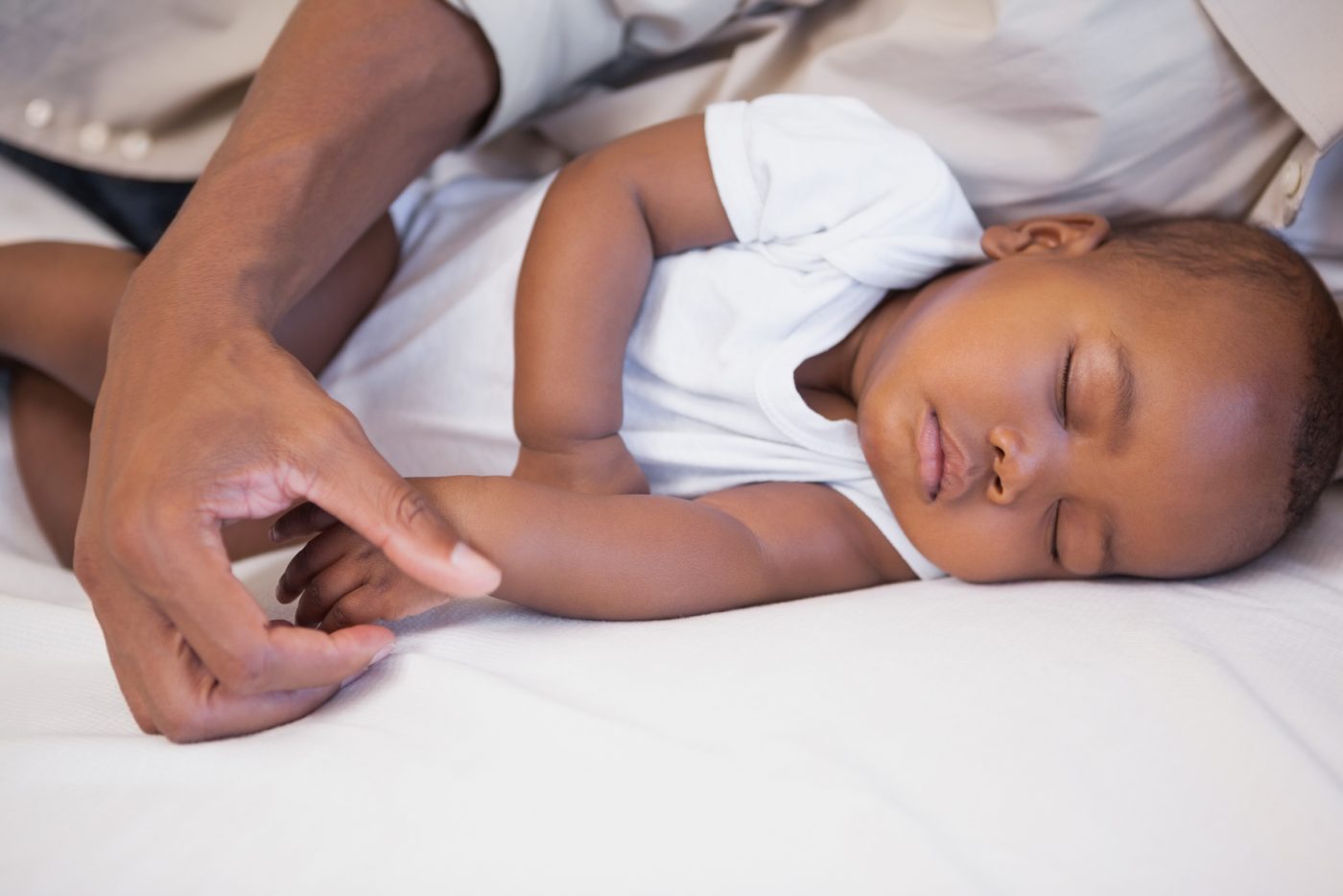Don’t co-sleep with your baby if you or your partner:
Are very tired or have drunk alcohol.
Smoke, even if it’s outside the home, or if you smoked during pregnancy
Have taken any drugs – prescription or otherwise – that make you sleepy.
Are on a sofa or chair.
Don’t co-sleep if your baby:
Has a fever or is ill.
Had a low birth weight (less than 2.5kg or 5.5 lbs).
Was born prematurely (before 37 weeks).
Check further guidelines below for more on safe co-sleeping.
Note again that prior to six months, babies are safest in a cot or a safety-approved bed space right up next to your bed. This still allows you to sleep close to each other but your baby is in their own safe bed space. (It is important to check attached cot beds are safety approved and not old ones that have been recalled and are fitted properly.)
The Lullaby Trust says:
Babies should be slept in a clear sleep space, which is easy to create in a cot or Moses basket. We know however that families also bed share, and so recommend making your bed a safer place for baby whether you doze off accidentally, or choose to bed share. The Lullaby Trust’s advice on co-sleeping with your baby will tell you how. For safer co-sleeping:
- Keep pillows, sheets, blankets away from your baby or any other items that could obstruct your baby’s breathing or cause them to overheat. A high proportion of infants who die as a result of SIDS are found with their head covered by loose bedding.
- Follow all of the Lullaby Trust’s other safer sleep advice to reduce the risk of SIDS such as sleeping baby on their back
- Avoid letting pets or other children in the bed
- Make sure baby won’t fall out of bed or get trapped between the mattress and the wall
When is co-sleeping NOT safe?
The Department of Health advises that bed-sharing should always be avoided if one or both parents:
- Is excessively tired.
- Has consumed alcohol.
- Is a smoker.
- Has taken any drugs, prescription or otherwise, that make you sleepy.
The risks of co-sleeping are also increased if your baby:
- Has a fever or any signs of illness.
- Had a low birth weight (less than 2.5kg or 5.5lb).
- Was born prematurely (37 weeks or less).
Safety tips when co-sleeping with your baby
If you do decide to co-sleep, you need to:
- Wait until your baby is over six months old. Prior to that, they’re safest in a cot or a safety-approved bed space right up next to your bed. This still allows you to co-sleep but your baby is in their own safe bed space. (It is important to check attached cot beds are safety approved and not old ones that have been recalled.)
- Keep your baby cool by using sheets and blankets rather than a duvet, otherwise, overheating can increase the chances of Sudden Infant Death Syndrome (SIDS).
- Always put your baby to sleep on her back rather than her front or side.
- Never leave your baby alone in the bed – pop them in a moses basket or cot if you need to leave the room.
- Ensure the mattress is nice and firm.
- Make sure your baby can’t fall out of your bed or their bed space. Make sure you only use safety approved cots that attach to the side of the bed and don’t use a second-hand cot that may no longer attach properly (if it is e.g., your first baby’s attached cot and you have a new mattress and it is still safety approved and fully working that is okay).
- Don’t use a pillow because of the risk of suffocation. Babies don’t need a pillow until they are a year old.
- Don’t let your baby and toddler sleep next to each other. Toddlers don’t understand how vulnerable little babies are.
- Never risk falling asleep with your baby on a sofa or armchair.
- Ideally, have a nice big bed so there’s room for everyone.
Prior to six months, babies are safest in a cot or a safety-approved bed space right up next to your bed. This still allows you to sleep close to each other but your baby is in their own safe bed space. (It is important to check attached cot beds are safety approved and not old ones that have been recalled and are fitted properly.)
If you choose to have your baby in your bed space, there is more information here:
The Lullaby Trust
DISCLAIMER
This article is for information only and should not be used for the diagnosis or treatment of medical conditions. Essential Parent has used all reasonable care in compiling the information from leading experts and institutions but makes no warranty as to its accuracy. Consult a doctor or other health care professional for diagnosis and treatment of medical conditions. For details
click here.
